Abstract
Schedule-induced polydipsia was studied in rats bar pressing under two-component multiple schedules of food reinforcement. The first component of the multiple schedule was a variable-interval 1-min schedule throughout the experiment. The schedule comprising the second component was varied over blocks of sessions in terms of rate and magnitude of reinforcement, and was either variable-interval 3-min (one pellet), variable-interval 3-min (three pellets), variable-interval 1-min (one pellet), or extinction. Water intake per session varied with the rate of reinforcement in the schedule comprising the second component and was highest when the schedule was variable-interval 1-min. Both bar-pressing behavior and licking behavior showed behavioral interactions between the two components of the multiple schedules. With magnitude of reinforcement held constant, a matching relationship was observed between lick rate and reinforcement rate; the relative frequency of licks in the constant component matched the relative frequency of reinforcement in that component. Bar pressing, however, showed only a moderate degree of relativity matching. During the schedule-induced licking, a burst of licking followed each delivery of a pellet (post-prandial drinking). The duration of these bursts of licking was observed to be a function of the inter-reinforcement interval.
Full text
PDF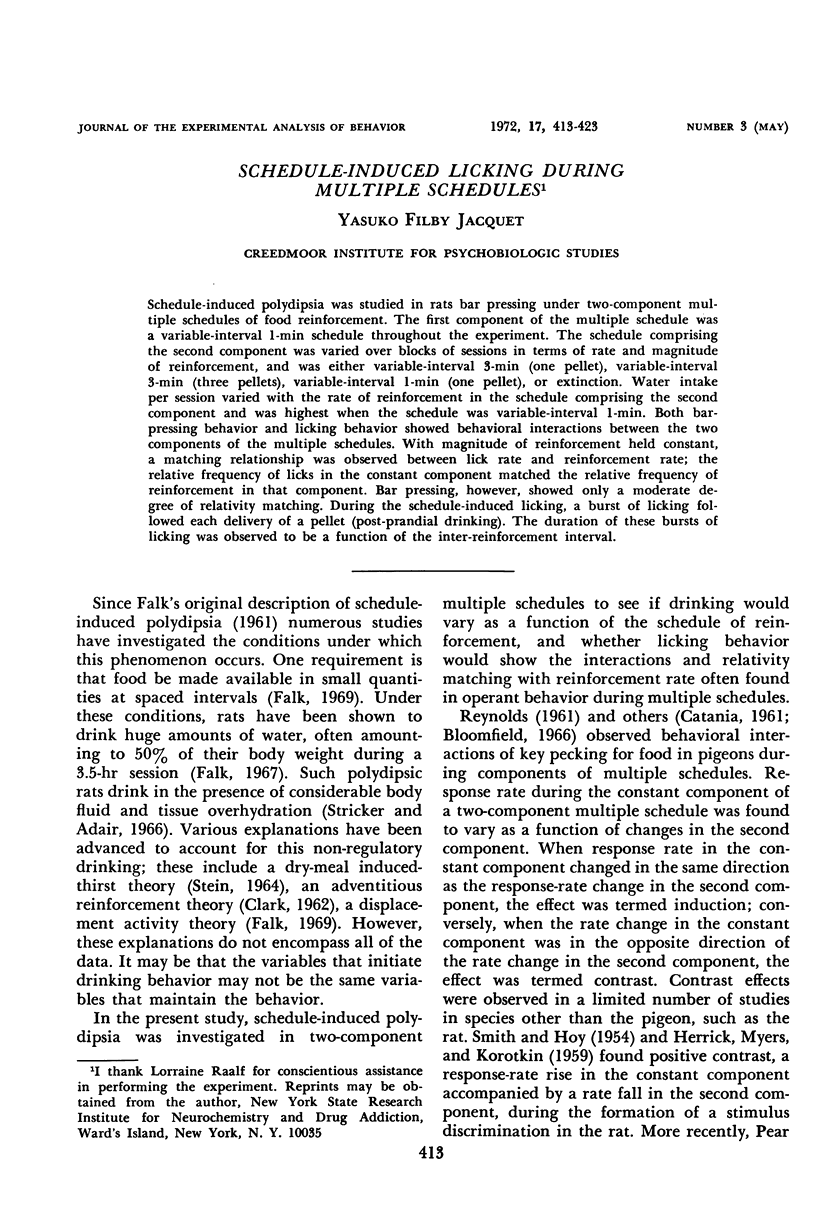
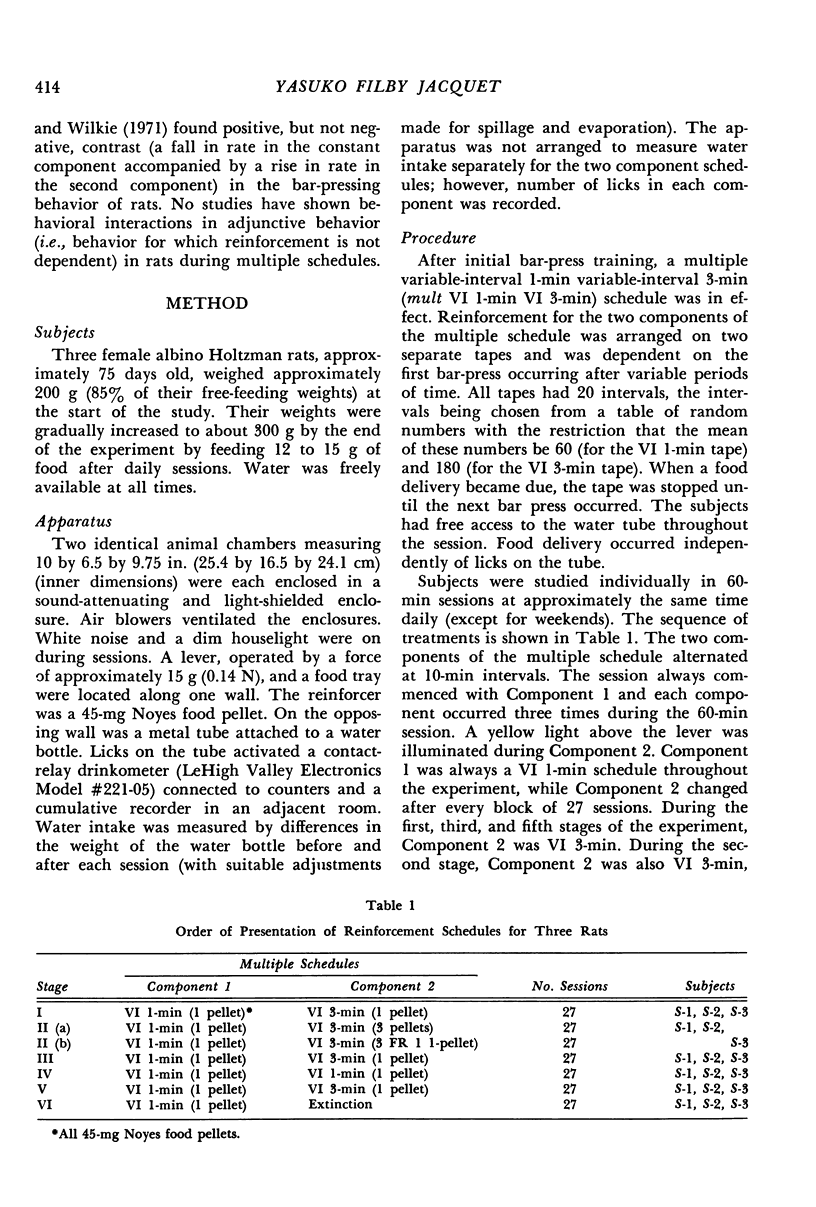
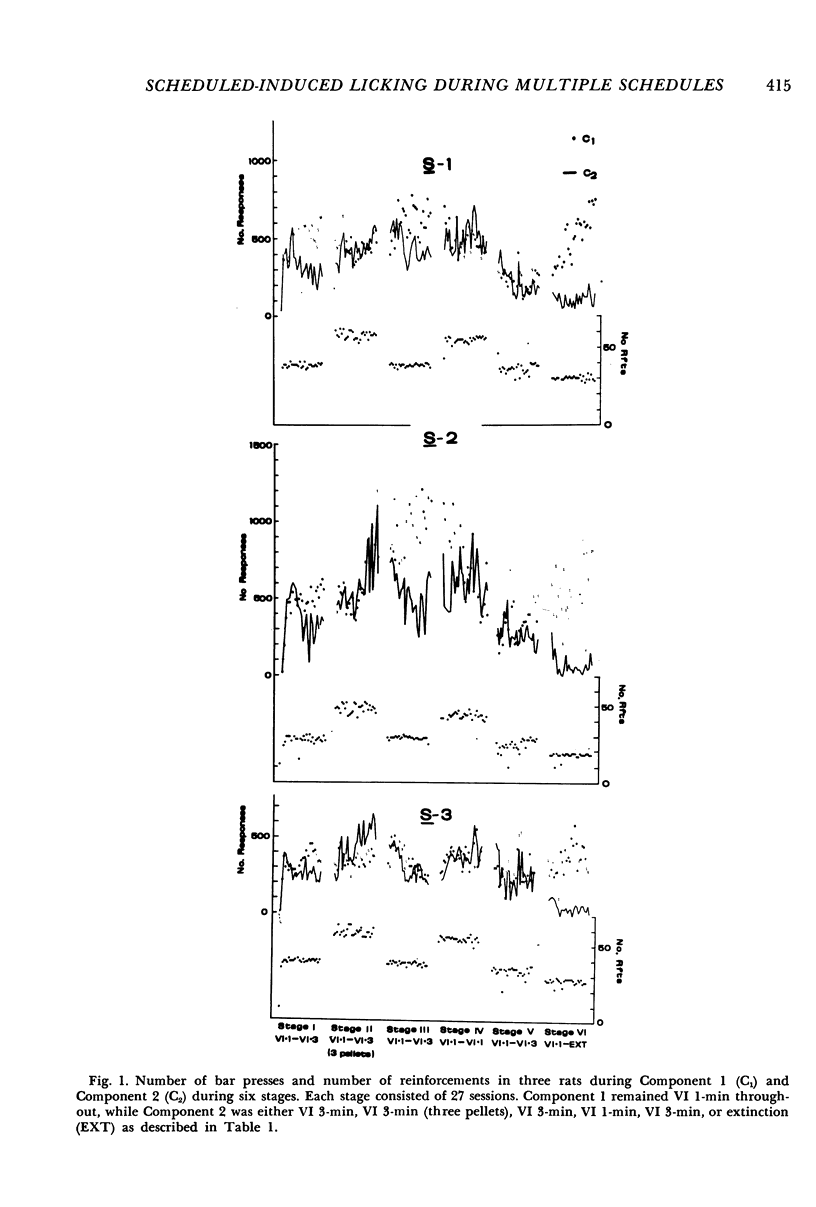
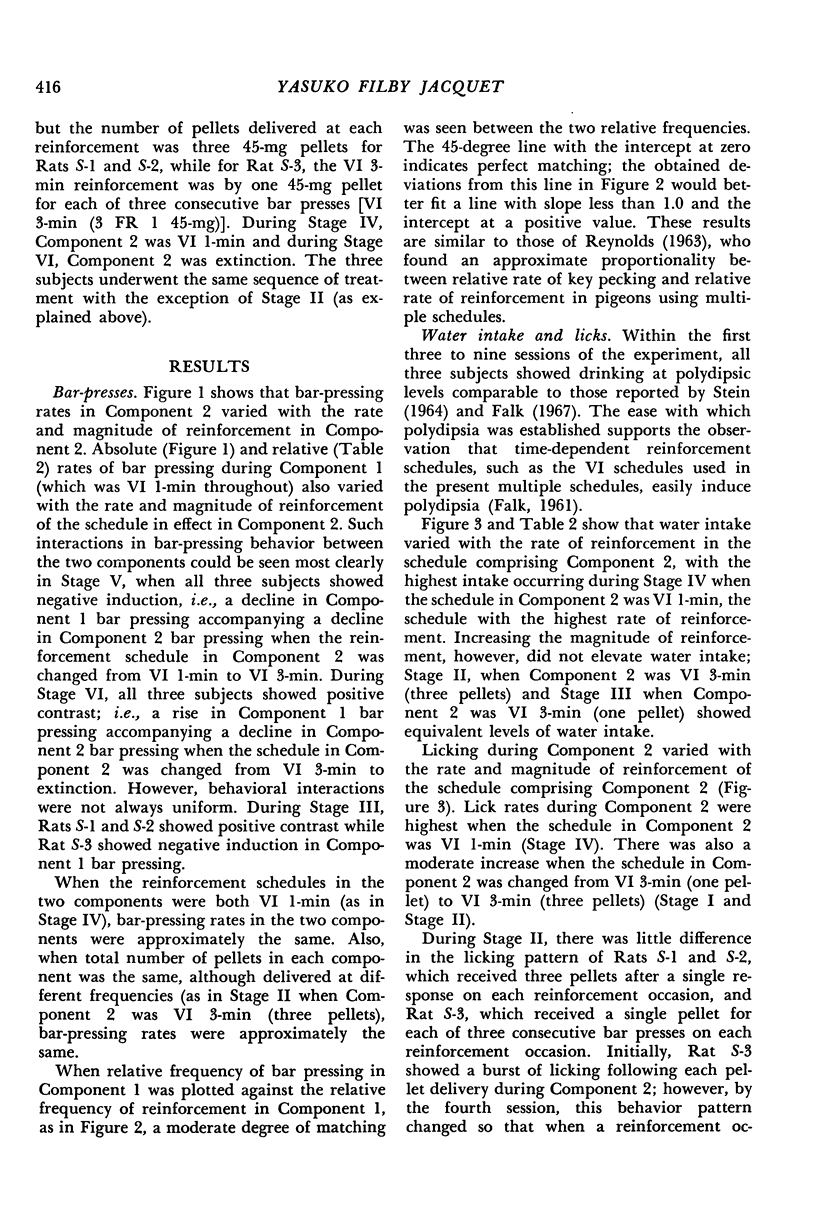
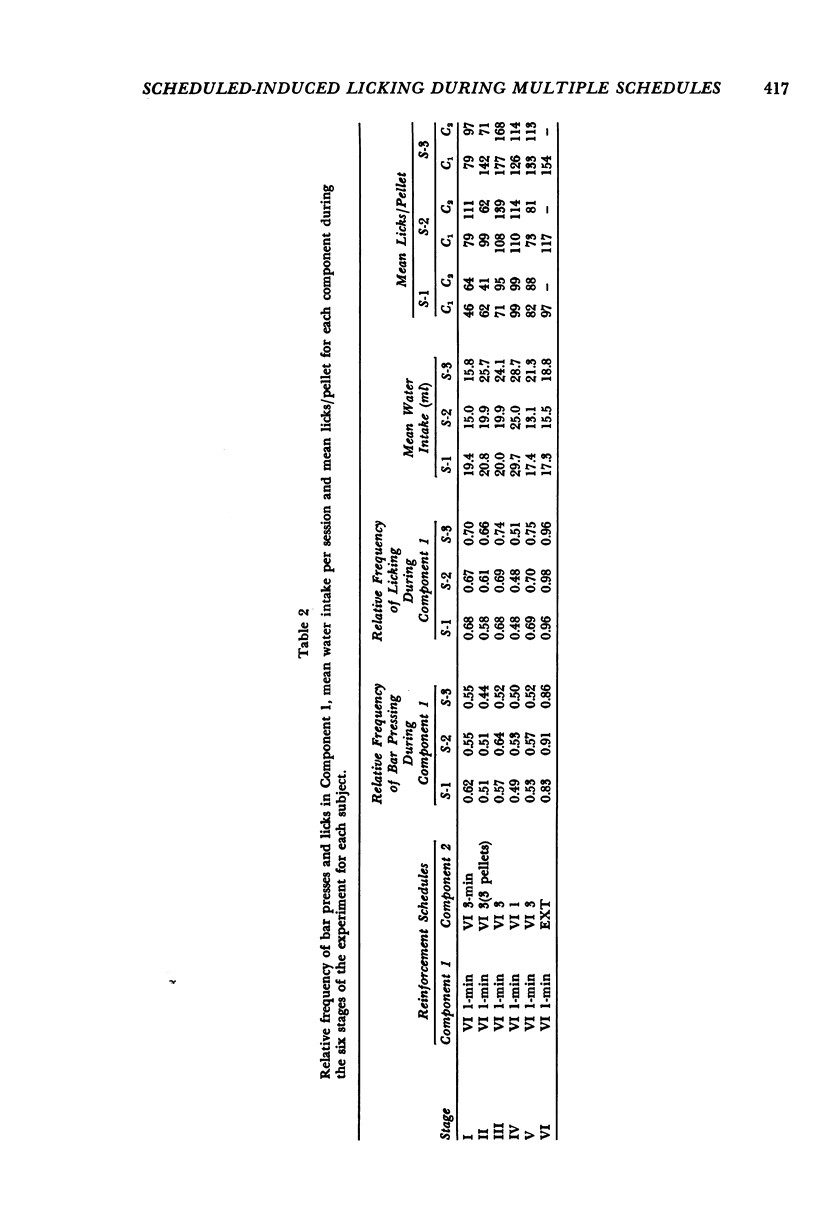
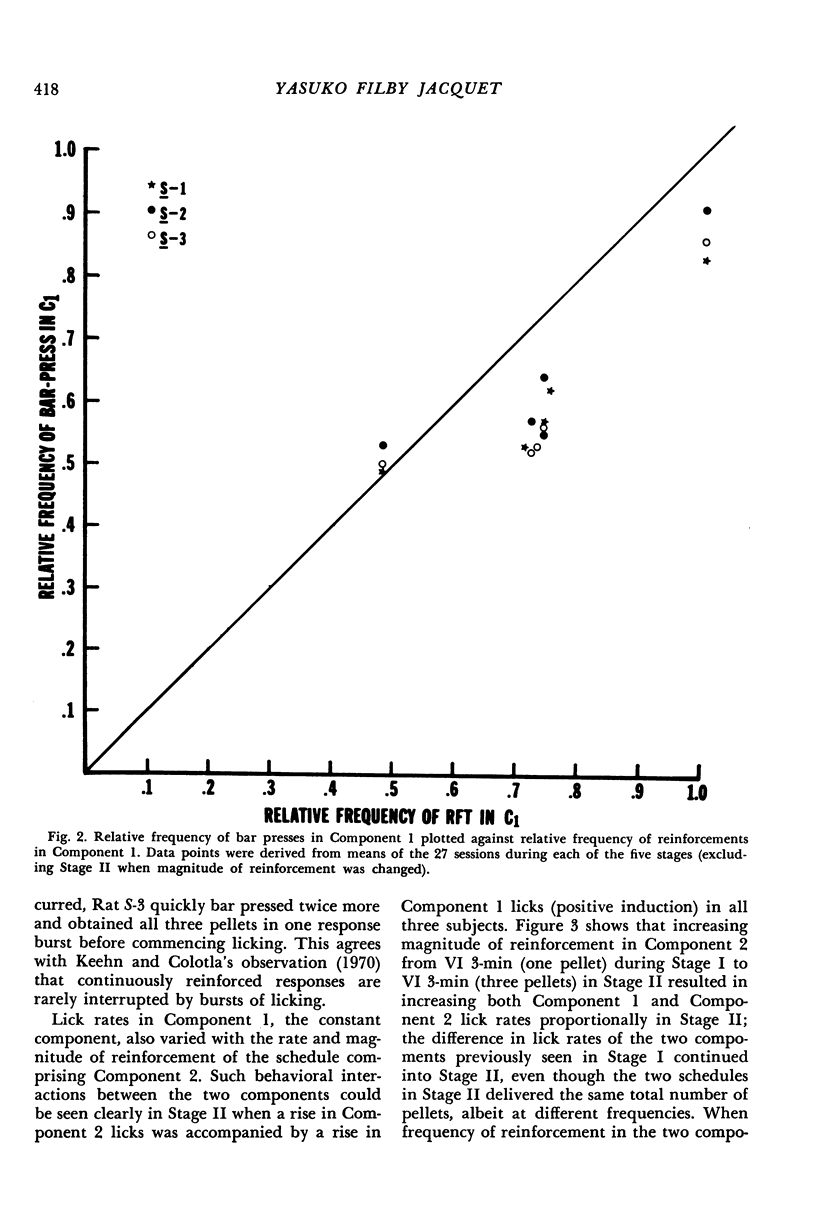
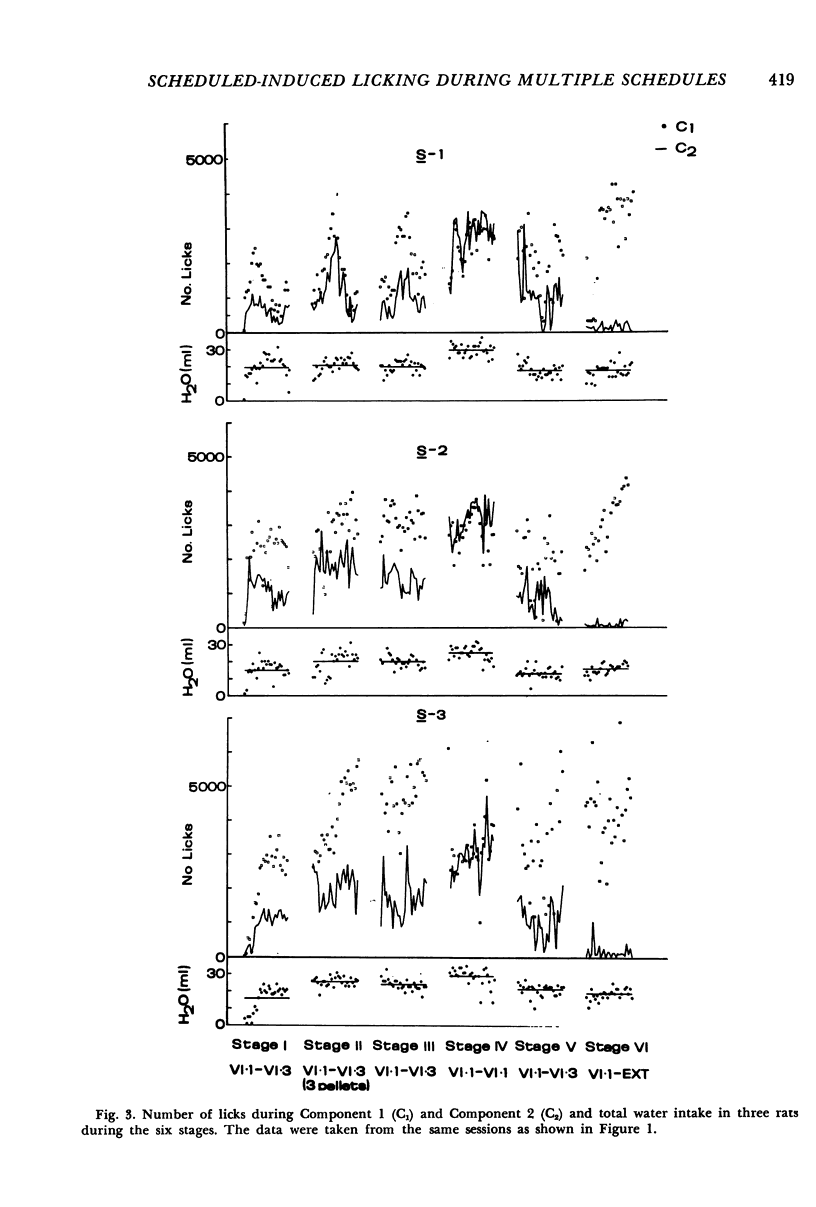
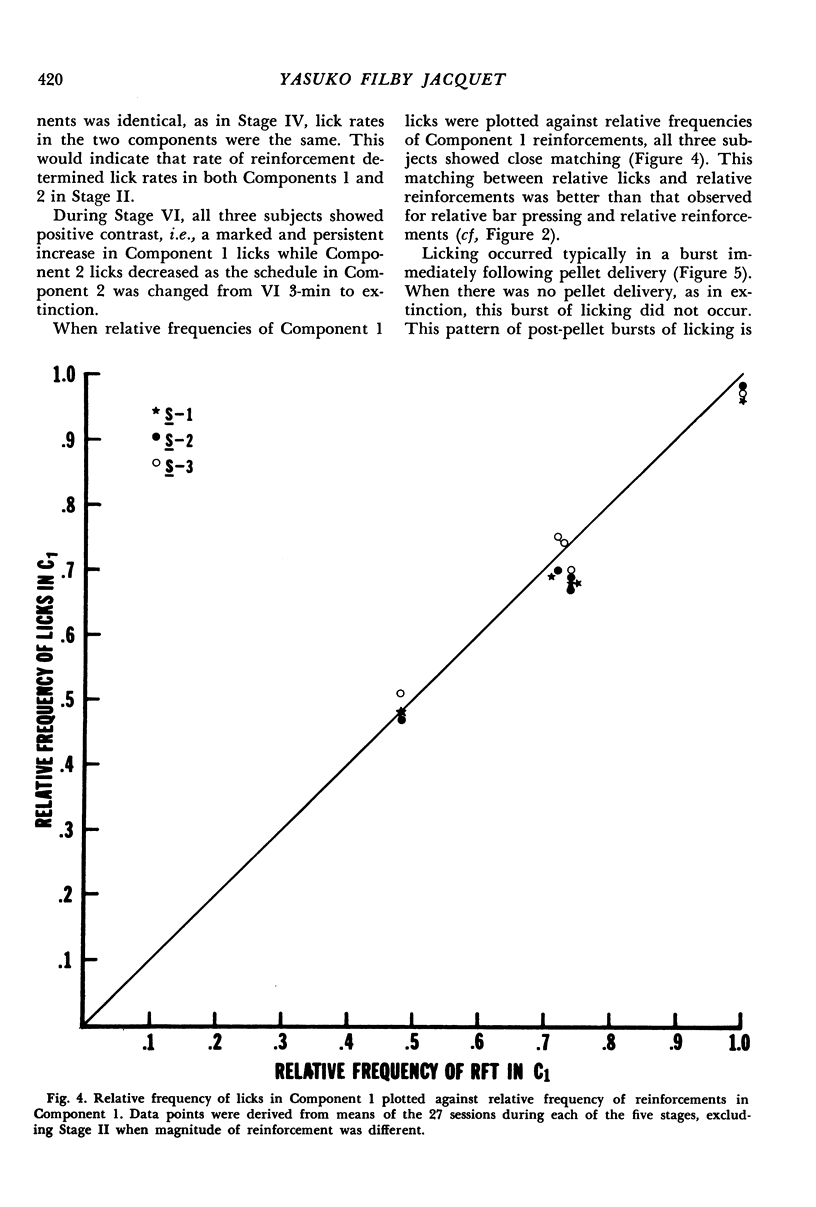
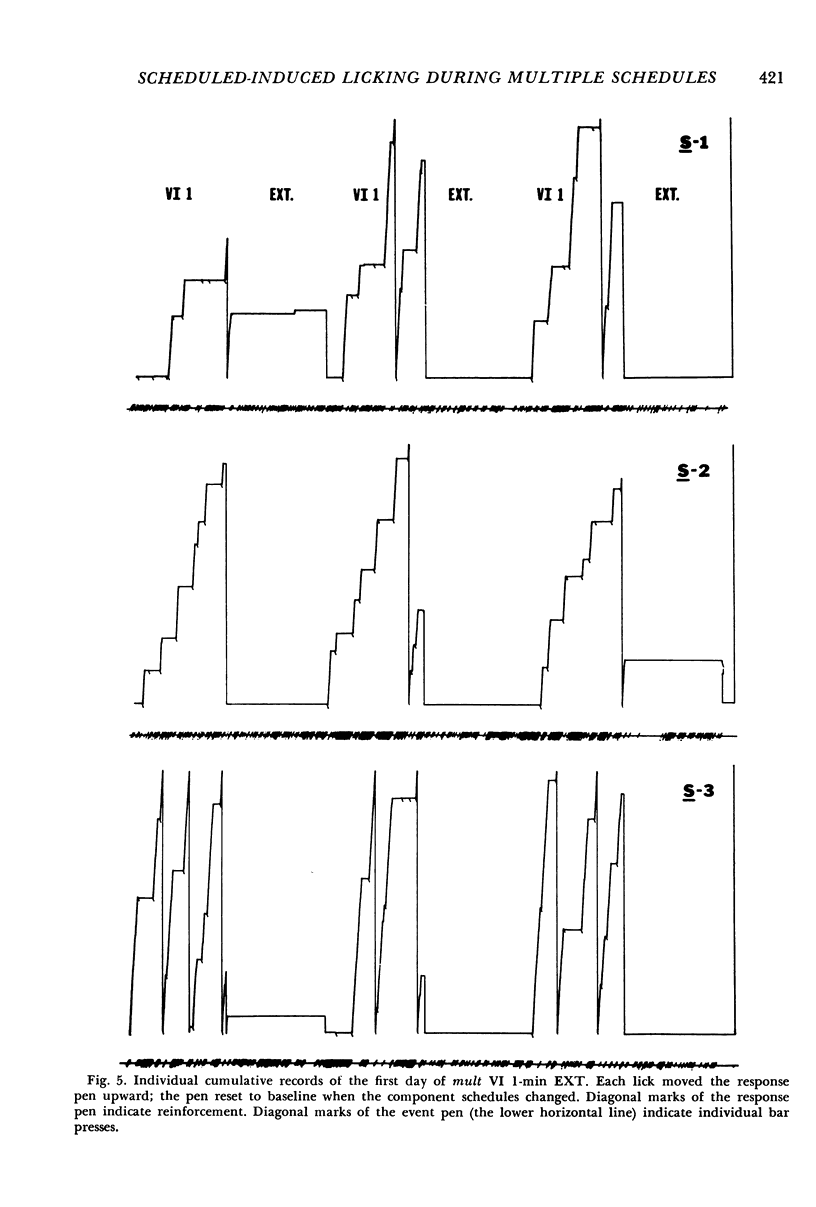
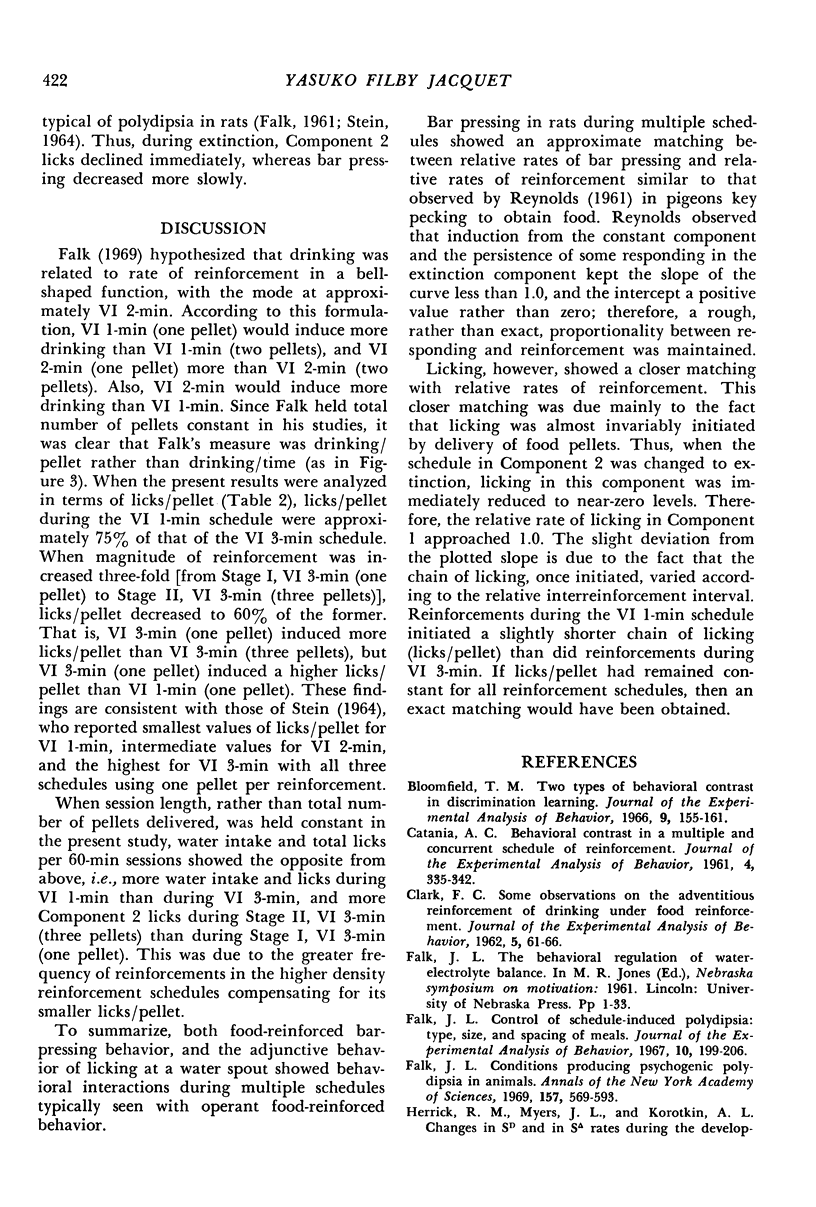

Selected References
These references are in PubMed. This may not be the complete list of references from this article.
- Bloomfield T. M. Two types of behavioral contrast in discrimination learning. J Exp Anal Behav. 1966 Mar;9(2):155–161. doi: 10.1901/jeab.1966.9-155. [DOI] [PMC free article] [PubMed] [Google Scholar]
- CATANIA A. C. Behavioral contrast in a multiple and concurrent schedule of reinforcement. J Exp Anal Behav. 1961 Oct;4:335–342. doi: 10.1901/jeab.1961.4-335. [DOI] [PMC free article] [PubMed] [Google Scholar]
- CLARK F. C. Some observations on the adventitious reinforcement of drinking under food reinforcement. J Exp Anal Behav. 1962 Jan;5:61–63. doi: 10.1901/jeab.1962.5-61. [DOI] [PMC free article] [PubMed] [Google Scholar]
- Falk J. L. Conditions producing psychogenic polydipsia in animals. Ann N Y Acad Sci. 1969 May 15;157(2):569–593. doi: 10.1111/j.1749-6632.1969.tb12908.x. [DOI] [PubMed] [Google Scholar]
- Falk J. L. Control of schedule-induced polydipsia: type, size, and spacing of meals. J Exp Anal Behav. 1967 Mar;10(2):199–206. doi: 10.1901/jeab.1967.10-199. [DOI] [PMC free article] [PubMed] [Google Scholar]
- HERRICK R. M., MYERS J. L., KOROTKIN A. L. Changes in Sd and Sdelta rates during the development of an operant discrimination. J Comp Physiol Psychol. 1959 Jun;52(3):359–363. doi: 10.1037/h0044283. [DOI] [PubMed] [Google Scholar]
- Pear J. J., Wilkie D. M. Contrast and induction in rats on multiple schedules. J Exp Anal Behav. 1971 May;15(3):289–296. doi: 10.1901/jeab.1971.15-289. [DOI] [PMC free article] [PubMed] [Google Scholar]
- REYNOLDS G. S. Relativity of response rate and reinforcement frequency in a multiple schedule. J Exp Anal Behav. 1961 Apr;4:179–184. doi: 10.1901/jeab.1961.4-179. [DOI] [PMC free article] [PubMed] [Google Scholar]
- REYNOLDS G. S. Some limitations on behavioral contrast and induction during successive discrimination. J Exp Anal Behav. 1963 Jan;6:131–139. doi: 10.1901/jeab.1963.6-131. [DOI] [PMC free article] [PubMed] [Google Scholar]
- SMITH M. H., Jr, HOY W. J. Rate of response during operant discrimination. J Exp Psychol. 1954 Oct;48(4):259–264. doi: 10.1037/h0056928. [DOI] [PubMed] [Google Scholar]
- STEIN L. EXCESSIVE DRINKING IN THE RAT: SUPERSTITION OR THIRST? J Comp Physiol Psychol. 1964 Oct;58:237–242. [PubMed] [Google Scholar]


